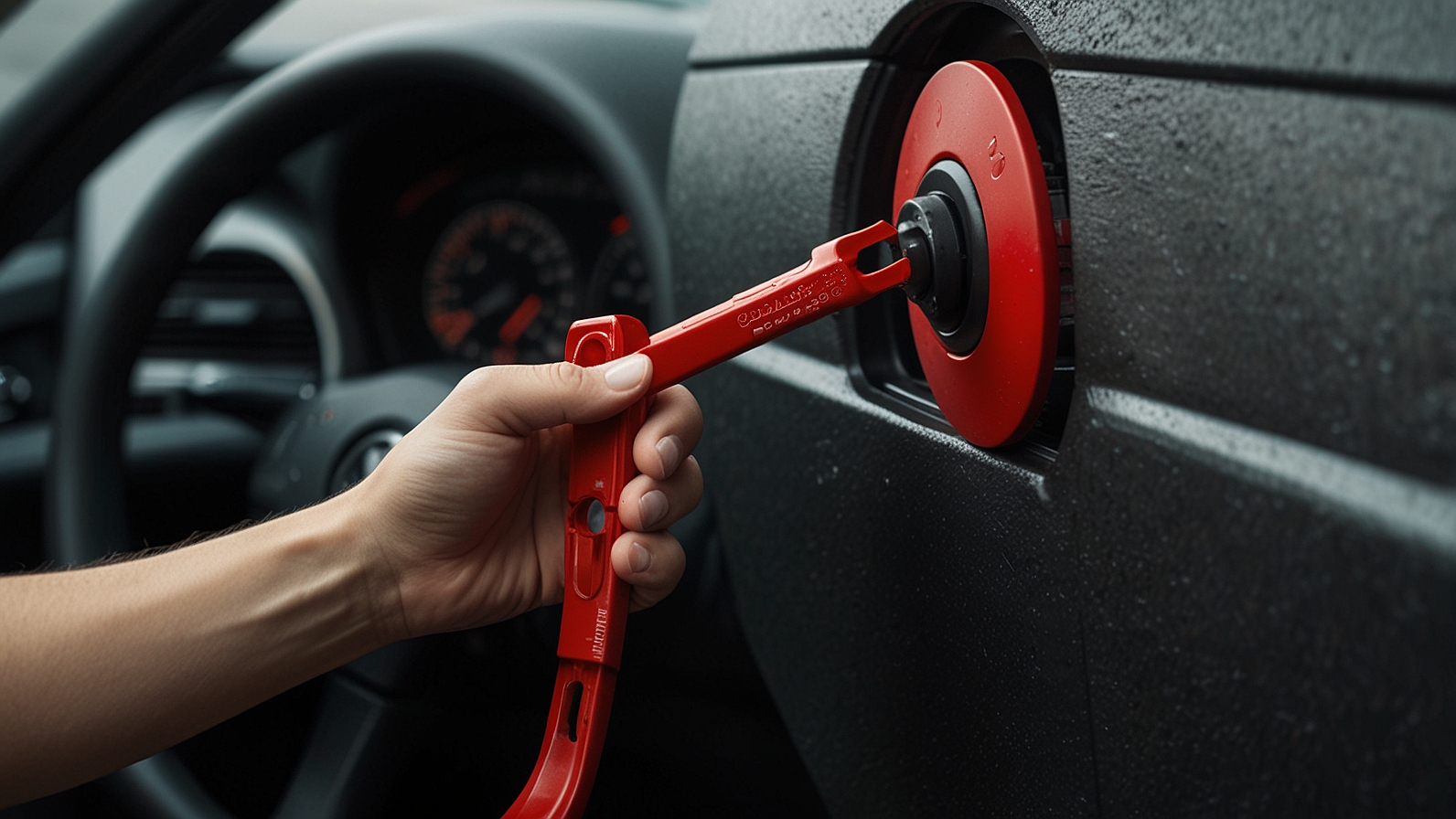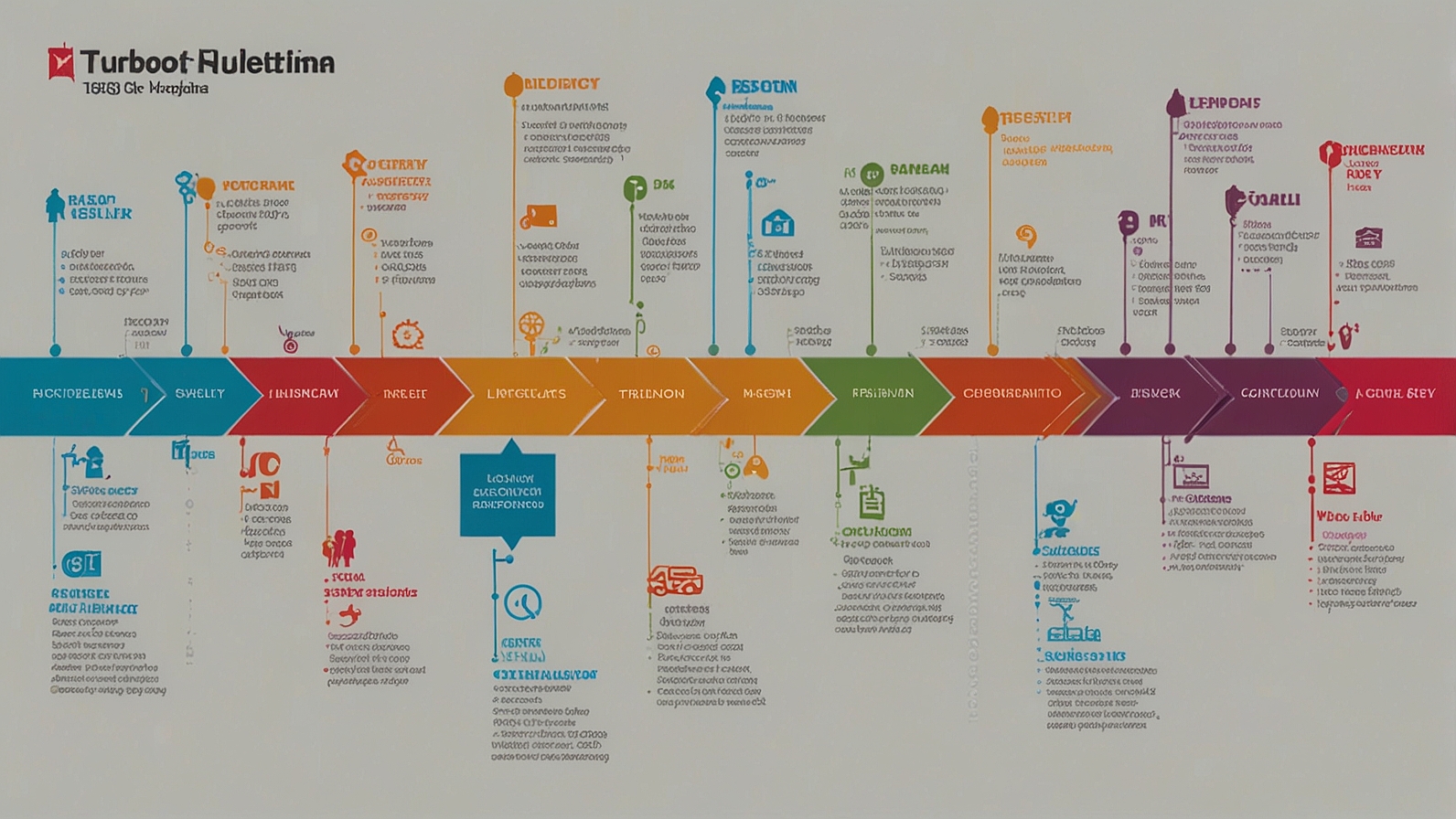How-To Guides
Key Considerations when Choosing a Translation Service Provider

If you’re looking to expand your business to foreign markets, it is important to ensure that your message, mission, and values are easily understood and appreciated by the target audience. To achieve this, you might need to enlist the services of a translation agency. The appropriate translation services can mean the difference between a well-received product and a market failure. To ensure the former, the following are key considerations when deciding on a translation service provider.
Native Expertise
Effective translation isn’t as simple as switching words from one language to another. Syntax, cultural nuances, and local expressions need to be thoughtfully considered, which is why working with native speakers is always a plus. Make sure they not only speak the language, but also understand the culture.
Reliability
You need to be comfortable with the turnaround time that the agency promises and happy that the translations are completed to a high standard, so make sure you read reviews and testimonials, and ask for a sample if possible.
Certification
Another consideration is whether the translation service provider is certified. For instance, a certified translation agency is more likely to provide quality and reliable translations compared to a non-certified one.
Services Offered
The breadth of services from a translation provider is another thing to carefully consider. Some providers only offer document translation while others offer additional services such as interpretation, subtitling, and localisation. Understanding your own unique requirements will assist you in making an informed choice.
Security Measures
In today’s digital world where data breaches are common, the security of your documents is paramount. The service provider should have measures in place to protect your sensitive documents both during and after the translation process.
Quality Control
A trustworthy translation company has a robust editing and proofreading process because it understands the significance of an error-free translation. The existence of a separate team for quality assurance signifies the provider’s commitment to providing superior translations.
Budget
Finally, it would be best if you also considered your budget. However, it’s important to note that high prices do not always equate to high-quality services. It’s always wise to balance quality and cost.
Always remember, the right translation service provider for you will always be one that aligns with your business needs and objectives, one that understands your products or services and your target demographics. With this information, they can help shape your messages so that they resonate with your intended audiences. In conclusion, choosing a translation service provider is not a decision to take lightly. If communicated well, the expected outcome is a well-received product and a thriving business.
How-To Guides
How to Safely and Professionally Address Workplace Bullying

The workplace should be a place of safety and respect for all individuals. However, many Australian employees continue to face workplace bullying in one form or another. Workplace bullying can have long-term effects on one’s mental health, productivity, and overall well-being, and must be addressed in accordance with Australian laws and regulations.
What Is Workplace Bullying?
Workplace bullying is any form of repeated, unreasonable behaviour towards another coworker. This type of behaviour can be seen in many different ways, such as:
- Physical or verbal abuse or harassment
- Spreading rumours or malicious gossip
- Withholding information needed to do your job
- Intimidation, humiliation, threats, or belittlement
- Exclusion from work-related activities
- Unreasonable demands
Anyone can be a perpetrator or a victim of workplace bullying. This eventually leads to a decline in mental health, decreased productivity, increased stress, and isolation.
What to Do If You’re a Victim of Workplace Bullying
Workplace bullying should be dealt with immediately. Here are some ways to address the situation.
- Keep detailed records of all incidents (dates, times, who was involved, any specific acts, etc.).
- Approach a trusted colleague or superior about the incident.
- Approach the bully/harasser and tell them that their behaviour is unprofessional and unacceptable.
- Know your rights and familiarise yourself with your company’s anti-bullying policies and local labour laws.
- File a complaint with your company’s HR department. Otherwise, you can talk to your Health and Safety Representative or union representative.
If you are a victim of workplace bullying, remember that you are not alone. Unions and laws such as the Fair Work Commission and the Work Health and Safety Act are dedicated to protecting the rights of employees and promoting a healthy work environment.
How to Prevent Workplace Bullying in the Future
Workplace bullying can be prevented with proper action and policies in place. Here are some ways:
- Clear anti-bullying policies and reporting systems that protect all employees
- Adequate training for all staff
- Proper support systems and regular follow-ups
- Fostering a culture of respect and accountability
Standing Together Against Workplace Bullying
There is absolutely no room for bullying or any kind of intolerable behaviour in the workplace. You can always talk to your union about providing proper support and taking necessary action. Everyone deserves to feel safe, respected, and valued at work, and that starts with speaking up and supporting one another.
YOU MAY ALSO LIKE: C.W. Park USC Lawsuit: A Case Study in Workplace Discrimination
How-To Guides
The Levapioli Tool: Your Ultimate Guide to Scratch-Free DIY

Ever sunk an hour into a simple car repair, only to be met with the heart-sinking crack of a plastic trim piece? Your fingers are sore, your patience is thin, and you’re now facing a costly repair for a part you were just trying to fix.
We’ve all been there. The problem is rarely a lack of skill—it’s using the wrong tool for a incredibly delicate job. This is exactly the scenario the levapioli tool was designed to prevent. Think of it as the secret weapon that separates a clean, professional job from a DIY disaster.
What is a Levapioli? Your First Step to Scratch-Free Car Work
Let’s clear this up first: what exactly is this thing? Imagine a crowbar designed for surgery. That’s a levapioli.
It’s a precise, non-marring prying tool that acts like a key, expertly releasing hidden clips and pins without damaging the soft plastic or painted surfaces of your car’s interior. While “levapioli” is often used as a catch-all name (much like “Kleenex” for tissues), it technically refers to a style of sturdy, plastic pry bar that’s become a must-have in any garage.
Why Your Screwdriver is a Terrible Substitute
It’s tempting to grab that trusty flat-head screwdriver. It’s metal, it’s sturdy, it’s right there. But resist the urge! Using a metal tool on your car’s interior is like using a sledgehammer to crack a nut.
The cost of using the wrong tool is high: marred trim, gouged dashboards, and shattered clips that are a nightmare to replace. Here’s a quick comparison:
| Tool | Use Case | Risk of Damage |
|---|---|---|
| Flat-Head Screwdriver | Prying trim | Very High (gouges, cracks, paint chips) |
| Your Fingers | Removing clips | High (soreness, broken clips) |
| Levapioli Tool | Prying trim, removing clips | Very Low (when used correctly) |
A levapioli is made from rigid yet forgiving materials like nylon, so it applies force without leaving a mark. It’s all about finesse, not force.
How to Use a Levapioli Like a Pro: A Step-by-Step Guide
Okay, you’re convinced. Now how do you use this thing without breaking anything? Follow these steps:
- Identify the Clip Locations: Before you pry, gently feel along the seam of the panel. Look for slight bumps or gaps. A flashlight can help you spot the hidden fasteners.
- Choose the Right Pry Tip: Most levapioli kits come with multiple shapes—forked, flat, and curved. A forked tip is perfect for prying out circular clips, while a flat tip is ideal for sliding into tight seams.
- Work Slowly and Methodically: Insert your chosen tip, apply gentle, steady pressure, and listen for a soft pop. That’s the sound of success! Move a few inches over and repeat. Never try to pull the entire panel off at once.
- Keep a Magnet or Container Handy: For those tiny, flying clips that always seem to disappear. Trust us on this one.
Beyond Door Panels: 5 Unexpected Uses for Your Levapioli
This tool’s talent isn’t limited to door panels. Its versatility makes it a superstar for:
- Radio Head Unit Removal: Perfect for prying off the trim bezel around your stereo.
- Grille Removal: Safely unclip the front grille for cleaning or replacement.
- Dash Cam Wire Tucking: Gently route wires along the headliner and A-pillar without damaging edges.
- Wheel Arch Liner Clips: Quickly remove those stubborn fender liner clips for brake work.
- Household Electronics: Great for opening up tablets, phones, or game controllers without leaving a mark.
Choosing the Best Levapioli Kit for Your Needs
Not all pry tools are created equal. Here’s what to look for:
- Material: Most are durable nylon. Higher-end models from brands like OTC or OEM Tools might have a flexible metal core for extra strength on stubborn clips, but they’re always coated in plastic to protect surfaces.
- Kit Size: A basic 3-piece set is great for beginners. Enthusiasts might want a larger kit with specialized hooks and picks for every conceivable job.
- Feel: Look for tools with a comfortable, ergonomic grip. You’ll be holding it for a while!
3 Pro Tips to Try on Your Next Project
- Warm Up Plastic: On a cold day, warm the interior trim with a hairdryer for 60 seconds. It makes old, brittle plastic more flexible and less likely to crack.
- Tape is Your Friend: Put a piece of masking tape on the paint or delicate surface near your pry point for an extra layer of protection.
- Start from the Bottom: Clips usually release easiest from the bottom of a panel. Work your way up and around for the cleanest removal.
So, what’s the first trim job you’re going to tackle with your new favorite tool?
You May Also Read: Your Ultimate Engine Guide: Unlocking Practical Knowledge at enginefirm.com
FAQs
Is a levapioli the same as a plastic pry tool?
Yes, absolutely. “Levapioli” is commonly used to refer to a set of non-marring plastic pry tools and trim removers.
Can it really prevent all damage?
When used correctly, it drastically reduces the risk. However, old, sun-baked plastic can be brittle. Always work slowly and use heat to soften aged plastic.
What’s the best material for a levapioli tool?
Durable, rigid nylon is standard. Pro-grade kits often add a metal core for strength but keep a non-marring plastic coating.
Are the cheap sets on Amazon any good?
For the occasional DIYer, a budget-friendly set is a fantastic starting point and far better than using metal tools. They might not withstand daily professional use but are perfect for home garages.
What should I do if I break a clip?
Don’t panic! It happens to everyone. Keep the broken pieces, note the style and location, and order a replacement clip online or from a dealership. They’re usually very inexpensive.
How-To Guides
How to Get in Touch in turbogeek.org for Support & Collaboration

In an age where a typical website visitor spends less than a minute on a page, making a meaningful connection is the ultimate digital currency. We’re surrounded by contact forms that lead to black holes and generic email addresses that never reply. This is precisely why we’ve re-engineered the entire process. If you’ve landed on this page, you’re not just looking for an address; you’re seeking a genuine point of contact. You want your voice to be heard, your problem to be solved, or your visionary idea to be explored. This guide is your direct line. It’s your complete roadmap on how to effectively get in touch in turbogeek.org and ensure your message lands in the right hands, for the right purpose, at the right time.
Why Your Voice Matters to TurboGeek
Before we dive into the “how,” let’s talk about the “why.” TurboGeek isn’t a monolithic entity; it’s a collective of writers, developers, designers, and tech enthusiasts. Every major update, troubleshooting guide, or new collaboration often starts with a single message from someone like you.
- Feedback Drives Improvement: That comment about a typo? It makes our content more professional. Your suggestion for a topic? It might become next week’s featured article.
- Support Requests Reveal Blind Spots: When you report a bug or something that’s not working, you’re not complaining—you’re helping us fortify the website for thousands of other users.
- Collaborations Spark Innovation: Some of our best projects have sprung from a simple email from a developer, a startup founder, or a fellow content creator.
Think of it like this: sending us a message isn’t dropping a letter into a void. It’s more like walking into a busy, friendly workshop and tapping the right person on the shoulder. We want that interaction to be as smooth and productive as possible.
The Right Channel for Your Mission: How to Get in Touch in turbogeek.org
Not all inquiries are created equal. Using the correct channel dramatically speeds up response times and ensures your message gets to the team best equipped to help. Here’s a breakdown of your options, designed like a choose-your-own-adventure for communication.
1. The Contact Form: Your All-Purpose Tool
The most direct way to get in touch in turbogeek.org is through our dedicated contact form. It’s the central hub for all non-urgent, general inquiries.
- Best For: General questions, feedback on content, article suggestions, press inquiries, and preliminary collaboration ideas.
- How to Find It: Navigate to the website’s main menu. You’ll typically find a link labeled “Contact,” “Get in Touch,” or “Connect with Us.”
- Pro-Tip for Success: Be specific in the subject line. Instead of “Hello,” try “Collaboration Idea: AI in Renewable Energy” or “Feedback on ‘Quantum Computing for Beginners’ Article.” This helps us route your message instantly.
2. Support Direct: For Technical Hiccups
Are you facing a broken link, a loading error, or a problem with a downloadable resource? This is the channel for you.
- Best For: Technical issues specifically related to the turbogeek.org website functionality.
- How to Find It: Look for a “Support” or “Report an Issue” link, often located in the website’s footer. This often pre-fills the form category to “Technical Support.”
- Pro-Tip for Success: Include details! Your browser (Chrome, Safari, etc.), the device you’re using (iPhone, Windows PC), and the exact URL where the problem occurred. A screenshot is worth a thousand words.
3. The Partnership Pipeline: For Business Proposals
We actively seek to collaborate with brands, tech companies, and educational institutions that align with our mission of demystifying technology.
- Best For: Advertising inquiries, sponsored content proposals, affiliate partnerships, and co-hosted webinars or events.
- How to Find It: Seek out a “Partners,” “Advertise,” or “Work With Us” page. This form is tailored to gather business information like company name and project scope.
- Pro-Tip for Success: Do a little homework first. Briefly explain why you believe our audiences are a good fit and what a potential collaboration could look like.
Comparison Table: Choosing Your Contact Path
| Your Goal | Recommended Channel | Expected Response Time |
|---|---|---|
| General Question / Feedback | Main Contact Form | 2-3 Business Days |
| Technical Website Issue | Support Direct Link | 1-2 Business Days |
| Business/Partnership Proposal | Partnership Pipeline Page | 3-5 Business Days |
| Urgent Security Issue | Dedicated Security Email | < 24 Hours |
Crafting the Perfect Message: A Template for Success
We want to help you quickly. A well-structured message is the fastest way to get a resolution. Here’s a simple template you can adapt:
Subject Line: [Clear Category]: [Brief Description]
- Example: Partnership Proposal: Web3 Developer Toolkit Collaboration
- Example: Support Request: Video not loading on Homepage
Body of Message:
- Introduction: “Hello TurboGeek Team,”
- Context: “I’m a long-time reader and software developer…” or “I was reading your article on [Article Title] when I noticed…”
- The Core Ask: Clearly state what you need, your idea, or the problem you’re facing. “I wanted to suggest a topic on…” or “I am experiencing an error when I try to…”
- Relevant Details: Include links, error messages, or specific examples.
- Closing: “Thank you for your time and consideration. I look forward to hearing from you.”
- Your Name
What Happens After You Reach Out?
Wondering about the next steps? Here’s our promise to you:
- Automatic Acknowledgement: You’ll receive an immediate auto-reply confirming we’ve received your message.
- Triage and Routing: Our team lead reviews and routes each message to the appropriate department (editorial, technical, business).
- Deep Dive: The relevant team investigates your query, tests reported bugs, or reviews your proposal.
- Human Response: A real person—not a bot—will craft a response addressing your specific points. We strive to respond to all queries within our stated time frames.
Key Takeaways and Your Next Step
Making contact should be simple, not a puzzle. Remember, the most effective way to get in touch in turbogeek.org is to use the purpose-built channel for your specific need and to provide clear, concise information.
- Use the right form for your goal (General, Support, Business).
- Write a descriptive subject line to get noticed.
- Provide all necessary details to avoid back-and-forth emails.
We built these channels because we truly value the dialogue with our community. Your input is the secret ingredient that keeps TurboGeek relevant, accurate, and on the cutting edge.
What will you reach out about first? A topic idea you’re passionate about? A bug you spotted? Or perhaps the seed of a collaboration waiting to happen? We’re all ears.
You May Also Read: ProcurementNation.com Contact Guide
FAQs
What is the average response time after I get in touch in turbogeek.org?
For general inquiries via the main contact form, please allow 2-3 business days for a response. Technical support requests are often addressed within 1-2 business days.
I have a great idea for a guest post. How do I submit it?
That’s fantastic! Please use our main Contact Form. Select the “Content Idea” or “Guest Post” category if available, or mention it clearly in your subject line. Include a brief outline of your proposed topic and any relevant writing samples or portfolio links.
I found a security vulnerability on your site. How do I report it responsibly?
We take security incredibly seriously. Please do not use the public contact forms. Look for a dedicated “Security” or “Report a Vulnerability” email address typically listed on our Security Policy page or in the website footer. We appreciate responsible disclosure.
Why didn’t I get a reply to my message?
First, please check your spam or junk folder, as our reply might have landed there. If it’s been longer than the stated response time, feel free to send a polite follow-up message, referring to your original sent date.
Do you offer technical support for products or services reviewed on your site?
While we provide guides and tutorials, we are not the official support channel for third-party products. For issues with a specific product, we always recommend contacting the manufacturer’s support team directly for the fastest help.
Are you open to collaborating with new startups?
Absolutely! We love hearing from innovative startups. Please use the “Partnership” or “Work With Us” channel to introduce your company and proposal. The more you can tell us about the mutual benefit for our audiences, the better.
Can I request a review of my product or software?
Yes. We are always on the lookout for new and interesting tech to cover. Send us a pitch through the partnership channel with details about your product and what makes it unique.
-

 Education10 months ago
Education10 months agoMastering Excel: Your Comprehensive Guide To Spreadsheets And Data Analysis
-

 Tech1 year ago
Tech1 year agoHow To Choose The Best Forex Trading Broker?
-

 Business1 year ago
Business1 year agoExploring the Rental Market: Properties for Rent in Malta
-

 Blog11 months ago
Blog11 months agoArab MMA Fighters Shine Bright: Meet the Champions of PFL MENA
-

 Travel1 year ago
Travel1 year agoExperience the Best Desert Safari Dubai Offers!
-

 How-To Guides1 year ago
How-To Guides1 year agoComprehensive Guide to Cockwarming: Enhancing Intimacy and Connection
-

 Home Improvement2 years ago
Home Improvement2 years agoEco-Friendly Round Rug Options for Sustainable Living in NZ
-

 Apps and Games2 years ago
Apps and Games2 years agoDiscover Tickzoo: The Ultimate Platform for Video Content Lovers and Creators
